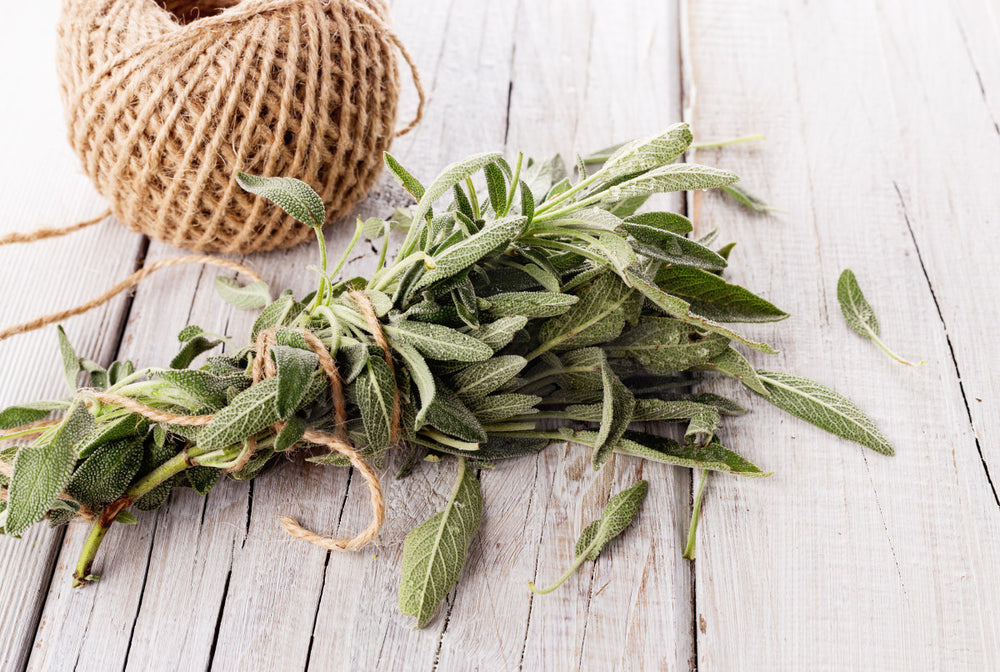News
10 Click & Grow Herbs You Can Use for Incense

Growing fresh herbs indoors is extremely easy with a smart garden. While herbs are commonly used for cooking, brewing tea and garnishing, did you know they can also be used for incense?

Image: iStock/foodandstyle
Incense is a substance you can burn to produce an aromatic scent. The use of incense dates back to ancient times and was particularly popular in the ancient Babylonian empire as well as in Greece and Egypt. To this day, people of many different cultures use incense for aromatherapy, meditation, religious ceremonies and even for simple aesthetic reasons. Incense is also used to counteract unpleasant odors or to repel insects.
Here are some Click & Grow herbs you can easily grow at home in your smart garden to use for incense. You could experiment using these herbs to create smudge sticks (bundles of herbs bound together by twine) that you can burn as incense.
How to make a smudge stick

Image: hellonest.co
- Trim your herbs to your desired size
- Attach a long piece of twine to the bottom of your herb bundle and wrap it around as tightly as you can until you reach the top
- Once you reach the top, tie your twine securely and trim off any excess
- Allow your smudge stick to dry for a minimum of 2 weeks
- When it’s time to burn as incense, light your smudge stick with a lighter or match
Click & Grow herbs for incense
1. Basil
Having been cultivated for over 5000 years, it’s no surprise that basil is one of the world’s favourite herbs. Burning a little amount of basil can go a long way. Its aroma can be described as herbal with slightly spicy undertones.
2. Catnip
Catnip was heavily used in Medieval times for cooking and herbal medicines. Known for its calming effect on felines and humans, catnip is a great herb to use for incense. It produces a faint mint aroma which is refreshing and not overpowering.
3. Dill
One of the earliest uses of dill was as a soothing medicinal herb in ancient Egypt. The ancient Babylonians were also known to have cultivated dill. It’s still widely used today and carries a fresh, light, herbaceous aroma.
4. Hyssop
The name ‘hyssop’ stems from the Greek word ‘hyssopos’ and the Hebrew word for ‘esov’, meaning ‘holy herb’. Hyssop’s aroma is a great pick-me-up, some even claim it smells like licorice. Its aroma can also be described as fruity, woody and slightly sweet.
5. Lavender
Lavender’s history dates back approximately 2,500 years and is believed to have originated in the Middle East, Mediterranean and India. There’s no mistaking the peaceful aroma of lavender. Its fragrance has been known to promote tranquility and help reduce stress.
6. Marjoram
The ancient Greeks greatly valued marjoram, using it as a natural remedy for many ailments.
Marjoram possesses a mild, sweet aroma with woody notes. Ideal for adding refreshing vibes to your living space.
7. Peppermint
Peppermint was originally cultivated in England in the late seventeenth century. Its aroma can be described as cool and minty-fresh. Many have found its scent to enhance relaxation and concentration.
8. Rosemary
Rosemary has long been viewed as a soothing herb that encourages a sense of peace. When burned, rosemary produces a crisp, woodsy aroma that’s sweet at the same time. It also goes well with sage bundles.
9. Sage
Ancient Romans referred to sage as a plant of salvation (relating to the word ‘salvare’, meaning ‘save’). It’s also been used in ancient medicines for its natural healing properties. Sage’s scent can be described as earthy and herbaceous.
10. Thyme
The ancient Greeks and Romans purified their temples by burning bundles of thyme. It was believed that those who inhaled the incense received a boost of courage. Thyme is great for those wanting a more penetrating, invigorating aroma. Its scent can be described as both spicy and warming.
Grow your favourite herbs in a Click & Grow Smart Garden
Fully automated indoor gardens that grow plant pods for you while making sure they have enough water, light, oxygen and nutrients.










